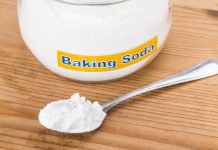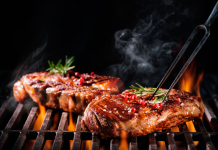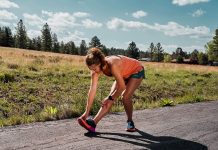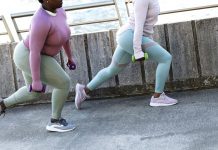Searing climate anticipates on the late spring schedule. In case you’re a sprinter, so do many preparing miles.
Exercises when the temperature climbs can put extra – and surprisingly risky – weight on your body. Warmth sicknesses that can create during exercise in the sizzling outside incorporate warmth cramps, heat depletion, and warmth stroke.
Sweltering and sticky climate warrants alert and recalibration for sprinters hoping to keep up with their wellness schedule, says practice physiologist Katie Lawton, MEd. Here are a few hints to remain safe while keeping to your preparation plan.
Best occasions to run when it’s hot
The coolest piece of the day ordinarily happens around dawn, so ascending before first light to run functions as an optimal answer for beat the warmth. (Not an early riser? Understand what an analyst and social rest medication expert prescribes to move your circadian musicality.)
Evening runs likewise offer a bit of a reprieve from the warmth, regardless of whether the temperatures don’t dunk as low as in the a.m. hours.
Either time allotment offers more ideal running conditions than noontime when everyday temperatures peak and the sun rebuffs those moving beneath. “A few groups can do it,” Lawton says, “however you will not think that I’m running at 1 p.m.”
What to wear running in the warmth
There’s an outfit for each event, including a 5-miler under the late spring sun. Running shirts and shorts for a hot day ought to be:
Baggy or vented to permit air to ignore and cool your skin.
Made of a dampness-wicking texture (commonly polyester-based) to help the vanishing system. Stay away from cotton articles of clothing, which rapidly transform into substantial, wet attire that traps heat against your body.
Light-hued, as dull shades, ingests the sun’s warmth.
Sprinters additionally might need to put resources into a lightweight, dampness-wicking cap, visor, or headband to ingest sweat and cool their head. Shades to shield your eyes from the sun’s hurtful UV beams are suggested, as well.
Discover concealed running courses when it’s hot
Asphalt ingests heat, making roads and walkways much the same as a griddle over a burner fire. (That clarifies the innumerable YouTube recordings of individuals attempting to cook an egg on sun-prepared walkways.)
The exercise here is to move your flees from these ill-advised cooking surfaces to stop trails, where miles of normal track anticipate underneath a cool, verdant overhang.
Would it be advisable for you to run as quickly in the warmth?
Running on a rankling hot day brings a distinct physiological reaction. Your pulse spikes as your body attempt to battle the impacts of overheating. This endurance mode nature redirects energy from muscles to zero in on cooling.
Each damp with sweat step will require more exertion as exhaustion fabricates – and that will be reflected in your speed. For each 5-degree increment over 60 degrees, the average sprinter can hope to ease back 20 to 30 seconds for every mile.
The effect can be much more prominent as the season’s change and sprinters adjusted to the virus abruptly face hotter temperatures. You ought to expect a change time of one to about fourteen days to feel great.
On the most sweltering days, Lawton proposes that you ought to overlook your speed following GPS watch and run more by exertion: “It’s a mentality change,” she says. “Pass by how you feel.”
The amount to drink previously, then after the fact, blistering climate runs
Sprinters don’t simply dribble sweat when the climate warms up. They spout it. The mass loss of liquid can prompt parchedness on the off chance that you don’t make appropriate strides prior and then afterward your exercise.
Make a point to drink 16-20 ounces of water or sports drink a couple of hours in front of any preparation run or race, Lawton says. Top that off by bringing down another 8-12 ounces within 15 minutes of the movement.
Plan on drinking liquids during any run enduring longer than 60 minutes. Lawton said a decent dependable guideline is to attempt to devour 3-5 ounces of fluid at regular intervals of effort. Convey drinks on longer runs or orchestrate courses with admittance to drinking fountains.
A while later, rehydrate with no less than 16 ounces of liquid for each pound that liquefied off in sweat during the exercise. Sports beverages can assist with reestablishing electrolytes. Chocolate milk, squeeze or organic product smoothies additionally are astounding alternatives. Water is in every case great, as well.
Screen the shade of your pee to decide if you’re appropriately hydrated. In case it’s not light yellow or clear, drink more liquids.
Cautioning signs to look for when running in the warmth
Pay attention to your body in case you’re battling during an altercation the sun, says Lawton. All the more significantly, don’t disregard them. Stop your exercise, escape the warmth and spotlight on chilling your body off in the event that you experience side effects, for example,
Issues or muscle fits.
Tipsiness or blacking out.
A migraine.
Outrageous weakness.
Skin that feels cold and sticky or hot and dry.
Be adaptable with summer running plans
Try not to compel a run when the climate or your body direct an alternate methodology, says Lawton. Consider slicing a since quite a while ago overview the middle or supplanting an arranged run with a broadly educating movement, like swimming or lifting loads.
On the off chance that conceivable, utilize the climate estimate to design your week after week run and timetable rest days or different exercises on the most smoking days.
“With the right arranging and approach, sprinters can get their miles in all through the mid-year,” says Lawton. “Be mindful, however, and don’t push it.”
































